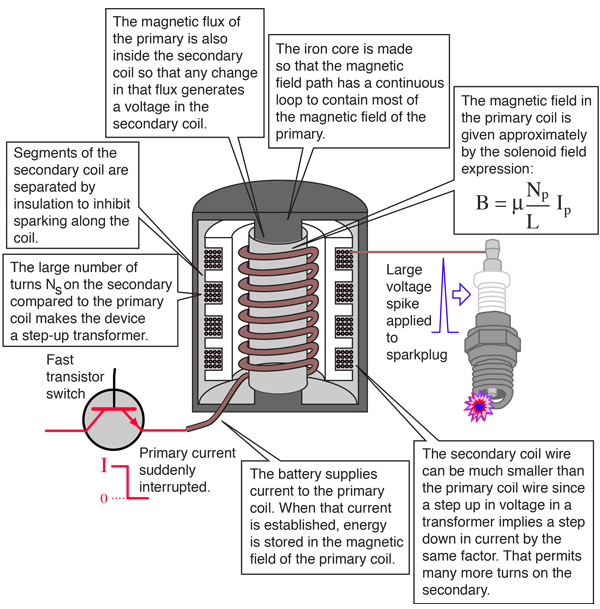Auto Ignition Coils
Auto ignition coils are transformer devices in automobile ignition systems which produce the high voltage necessary to fire the sparkplugs of gasoline internal combustion engines.
| Remove annotation to coil diagram |


The primary winding of the ignition coil is wound with a small number of turns and has a small resistance. Applying the battery to this coil causes a sizable DC current to flow (Ohm's law) even though it has a significant inductance which slows the increase of that current to its maximum value. The secondary coil has a much larger number of turns and therefore acts as a step-up transformer. But instead of operating on AC voltages, this coil is designed to produce a large voltage spike when the current in the primary coil is interrupted. Since the induced secondary voltage is proportional to the rate of change of the magnetic field through it, opening a switch quickly in the primary circuit to drop the current to zero will generate a large voltage in the secondary coil according to Faraday's Law. The large voltage causes a spark across the gap of the sparkplug to ignite the fuel mixture.
The current in the primary coil is caused to drop to zero quickly be the opening of a fast transistor switch. This causes the magnetic field in the primary coil to drop rapidly, generating a large voltage in the secondary coil. The generated voltage is proportional to the rate of change of the magnetic field according to Faraday's Law, and the amount of change is multiplied by the effect of the iron core in the coil.
Faraday's law concepts
Inductance concepts
| HyperPhysics***** Electricity and Magnetism | R Nave |